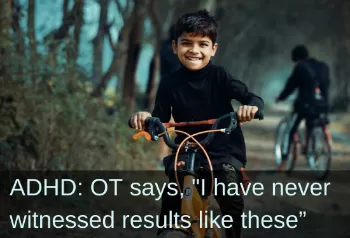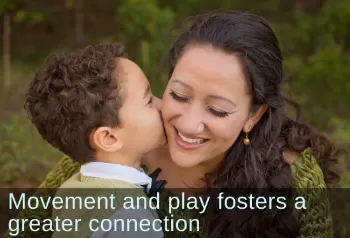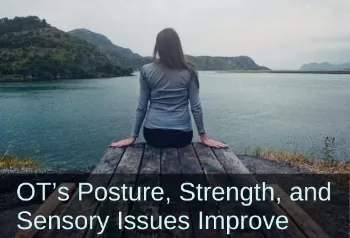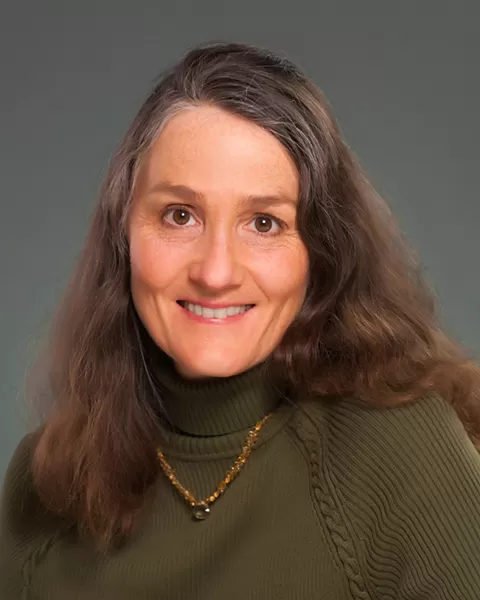Reflex Integration CEU Courses for OTs and OTAs
5 Reasons Occupational Therapy Professionals Love the Brain and Sensory Foundations Training
 For OTs and OTAs in USA, 1.8 AOTA CEUs* (18 Contact Hours)Greetings OT professionals!
For OTs and OTAs in USA, 1.8 AOTA CEUs* (18 Contact Hours)Greetings OT professionals!
As a course developer, instructor, and approved provider with AOTA since 2015, I have had the opportunity to engage with thousands of OTs and OTAs. Occupational therapy professionals (OTPs)—from new to seasoned therapists—have enthusiastically embraced the Brain and Sensory Foundations continuing education courses for training in rhythmic movements and primitive and postural reflex integration. They find the tools exceptionally useful for helping their clients of all ages to participate in meaningful occupations with greater ease and ability.
OT professionals are amazed at how quickly they see positive transformations in their clients. In this 2.5 minute video Lynda Steed, OTR/L, says that doing rhythmic movements and primitive reflex integration have improved outcomes in areas of self regulation, handwriting, motor planning, body awareness, coordination and more : “I am helping kids experience success like I’ve never seen".
Like the occupational therapy profession itself, the Brain and Sensory Foundations curriculum is holistic, incorporating a wide variety of effective activities.
"I am stunned by the level of information that has been shared in Brain and Sensory Foundations. I feel that the value far exceeds what was paid. The scientific and rehabilitative value of rhythmic movement and reflex integration is irrefutable and cutting edge practice for clinicians and educators.”
—Alexandra Lejeune, Occupational Therapist
From years of experience, here is my informal list of the Top 5 Reasons Why Occupational Therapy  See this and more case studies from OTs and OTAsProfessionals Love the Brain and Sensory Foundations Continuing Education Course in Primitive Reflex Integration:
See this and more case studies from OTs and OTAsProfessionals Love the Brain and Sensory Foundations Continuing Education Course in Primitive Reflex Integration:
- The courses are evidenced-based with supporting research, rationale, and case studies.
- OTPs get high compliance from children and parents in adopting these movements in clinics, schools, and at home. This is because the activities are relaxing, enjoyable, user-friendly, and playful. There are many effective activities for each reflex so there is something relevant for every age and ability level.
- Many OTs say: "These are the best tools I have ever found to help with Sensory Processing Disorders." The innate rhythmic movements, plus primitive reflexes and postural reflexes, are the very movements that develop sensory processing during infant development. We use these same innately powerful movements after infancy to mature the sensory systems and promote more optimal functioning. No wonder OTs also say: "My practice has completely changed after taking this course!"
- Better results in less time. OTs often tell me: "I am astounded by the progress I have seen in such a short amount of time." or "I see results now in two months that I used to be happy to get in a year."
- Everyone wins: The movements are energizing and excellent for stress-release and goal achievement. OTPs say the movements help them as much as their clients. Here are just two of many examples:
This occupational therapist helped herself and her 5-year-old son using techniques from the Brain and Sensory Foundations Course. Both mother and child overcame sensory processing issues and anxiety. Read about their touching journey.
This OT had lordosis of the spine, weak core, and sensitivity to loud noises. By using innate rhythmic movements and primitive reflex integration, she considerably improved these issues. See why she is so excited to share these tools with her clients.
The combination of tools in the Brain and Sensory Foundations courses work synergisticly to effectively support client activities and occupations. Join in the fun and get tools for transformation that can serve you both personally and professionally.
Sonia Story, M.S. has been teaching neurodevelopmental movements since 2006.
Sonia developed the Brain and Sensory Foundations program to provide comprehensive training in neurodevelopmental movements—combining innate rhythmic movements, play, primitive reflexes, and postural reflexes.
She earned a Bachelor's degree in biology/psychology and a Master’s degree in Movement Sciences. She is the author of The Importance of Reflex Integration and the Evidence eBook, giving the rationale and evidence basis for using neurodevelopmental movements for helping with challenges such as ADHD, Sensory Processing Disorders, anxiety, emotional dysregulation, visual skill deficits, poor social skills, gross and fine motor delays and other neurodevelopmental and behavioral disorders.
Her work is featured in numerous podcasts, summits, and conferences, and in the books Almost Autism: Recovering Children from Sensory Processing Disorder; Special Ed Mom Survival Guide; Family Health Revolution; and Same Journey, Different Paths—Stories of Auditory Processing Disorder.
Sonia’s mission is to help children and families experience the profound benefits of neurodevelopmental and integrative movements for more functional and fulfilling lives.
*Move Play Thrive is an AOTA Approved Provider of professional development, provider ID# 8892. This distance-learning, online activity is offered at 1.8 AOTA CEUs, introductory level, OT Service Delivery/Foundational Knowledge. The assignment of AOTA CEUs does not imply endorsement of specific course content, products, or clinical procedures by AOTA.




